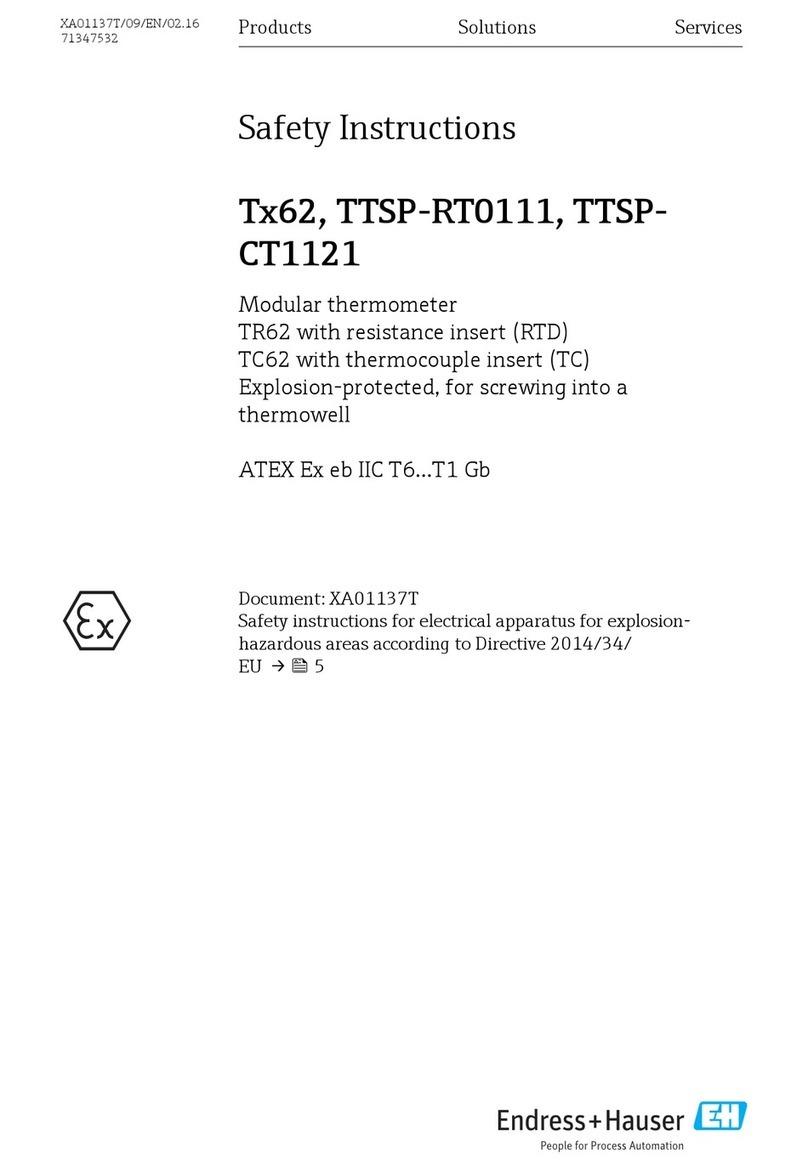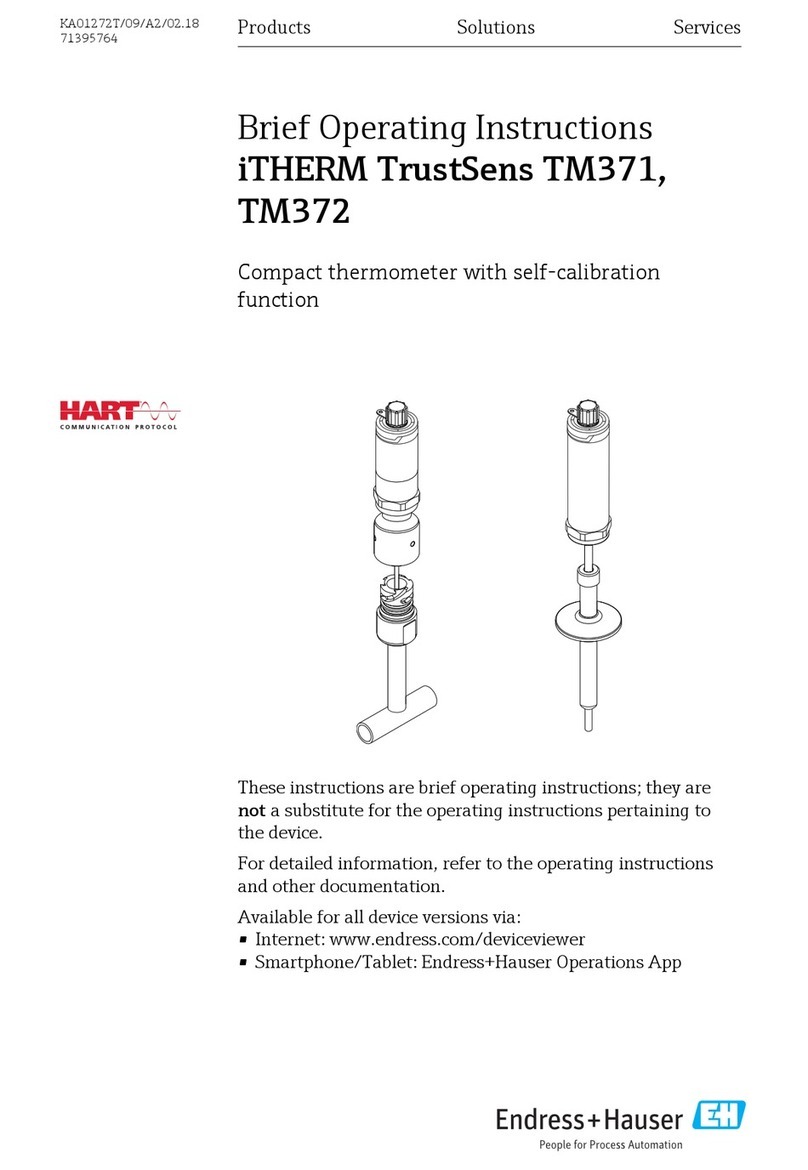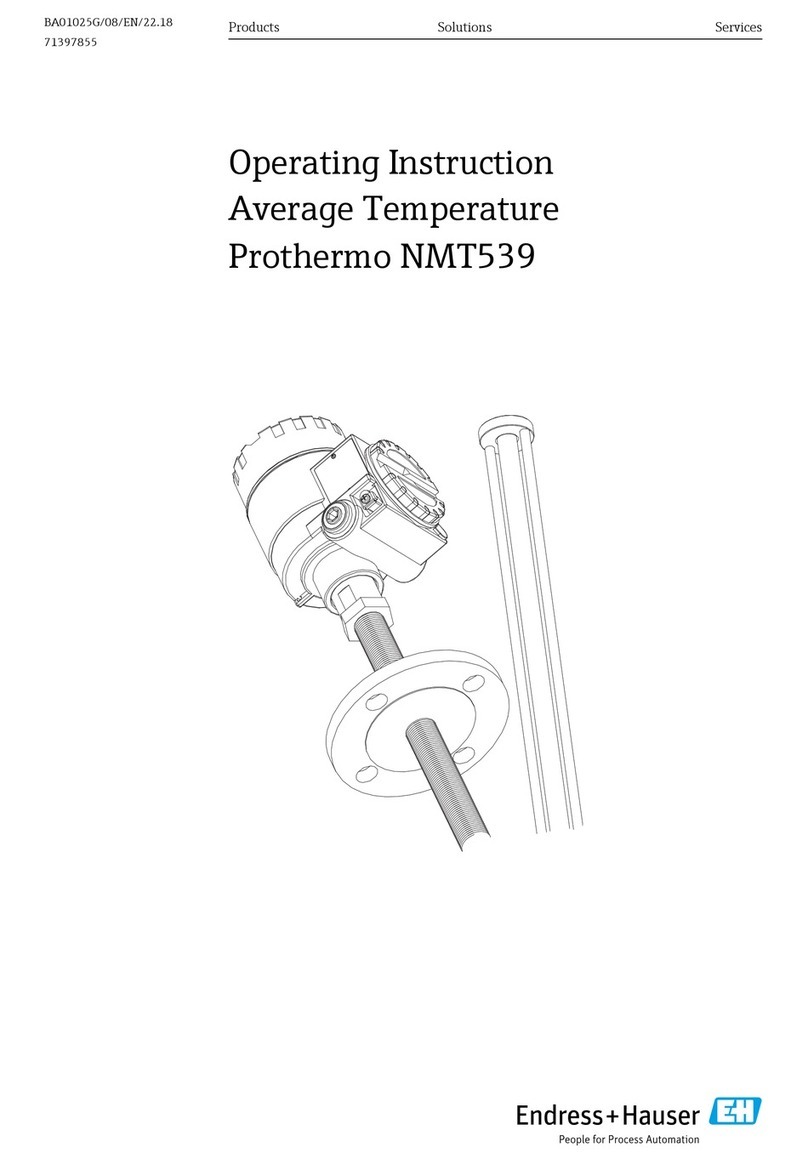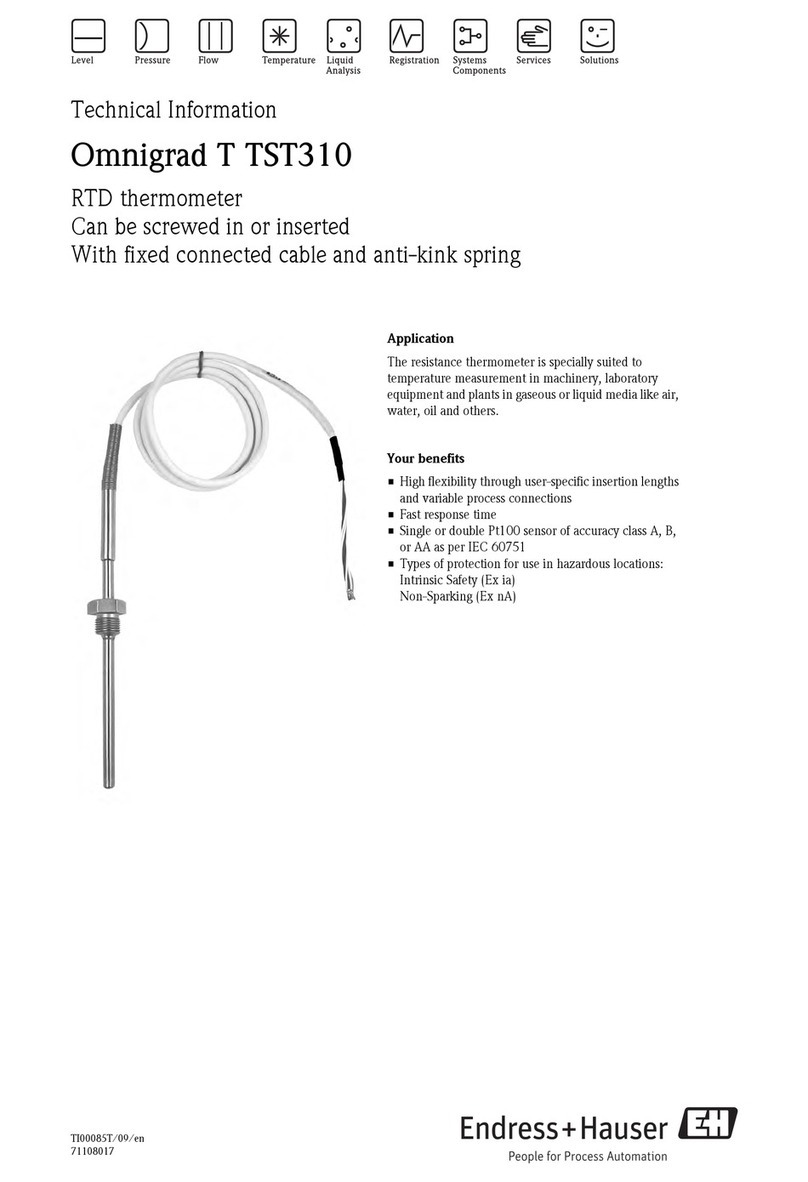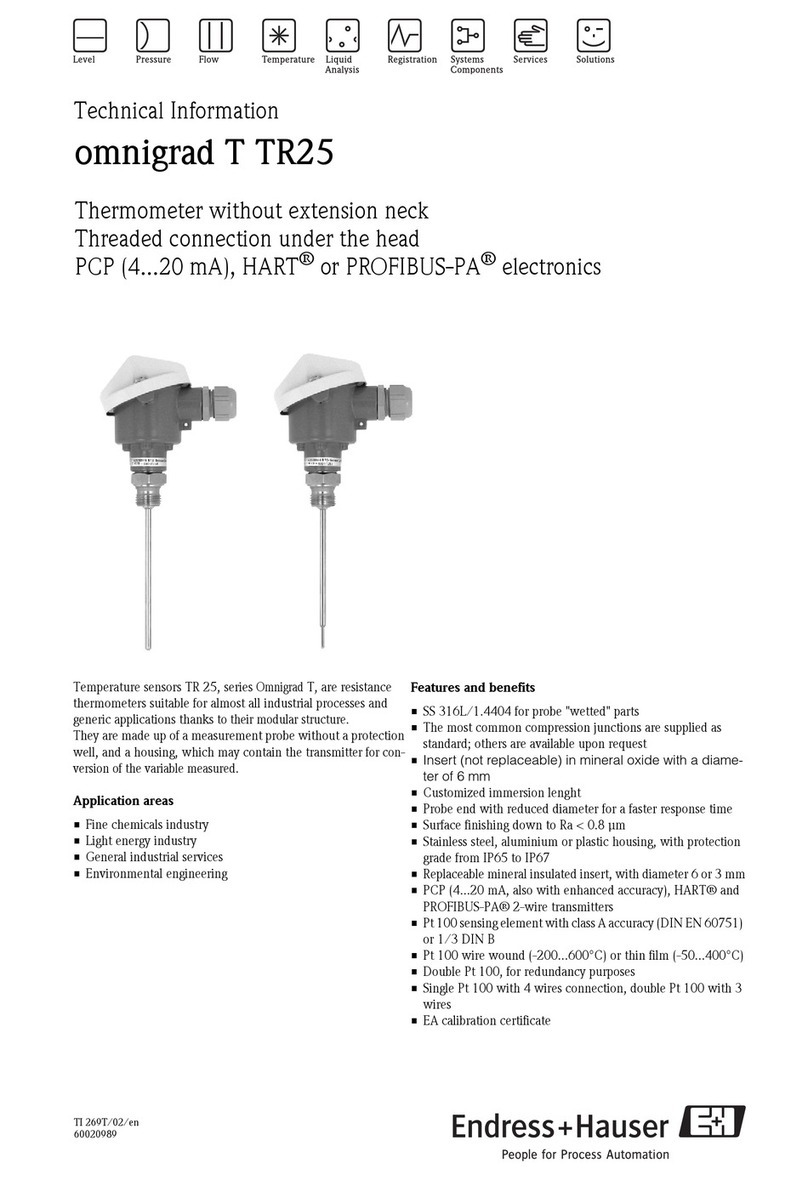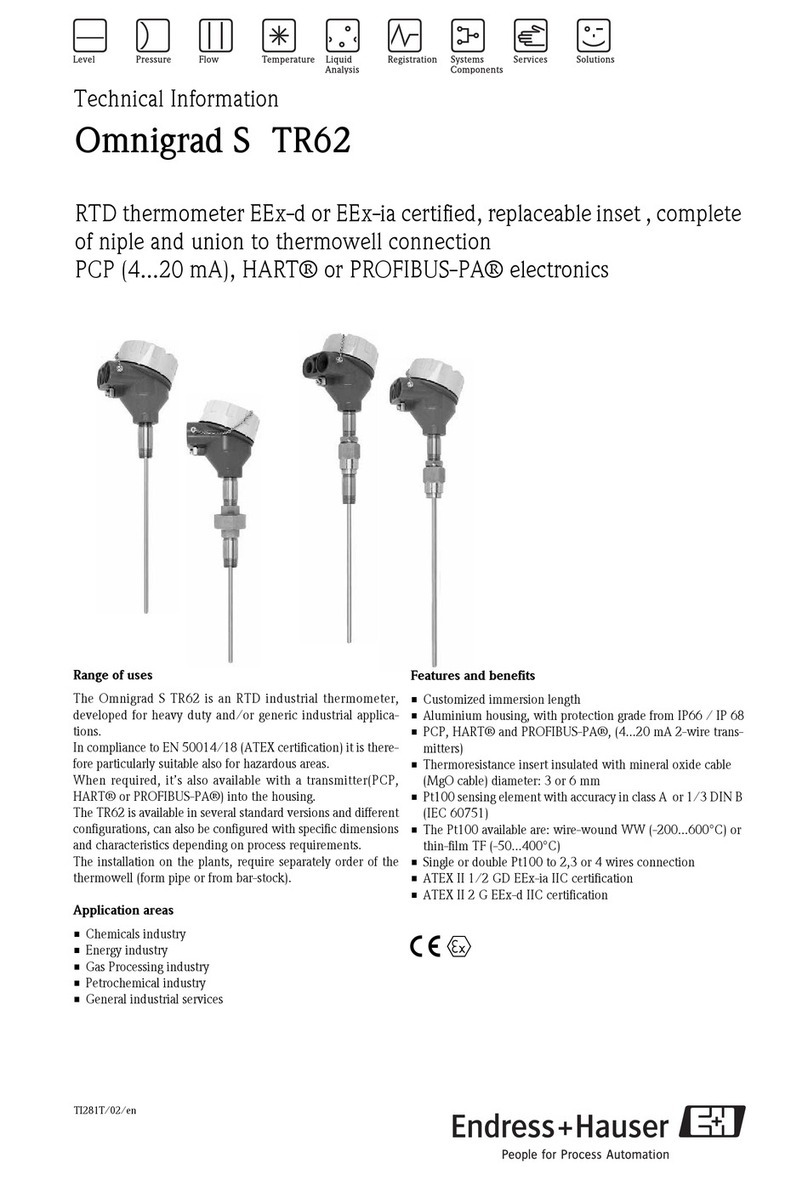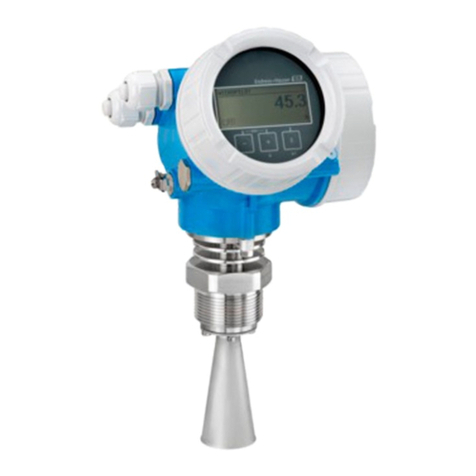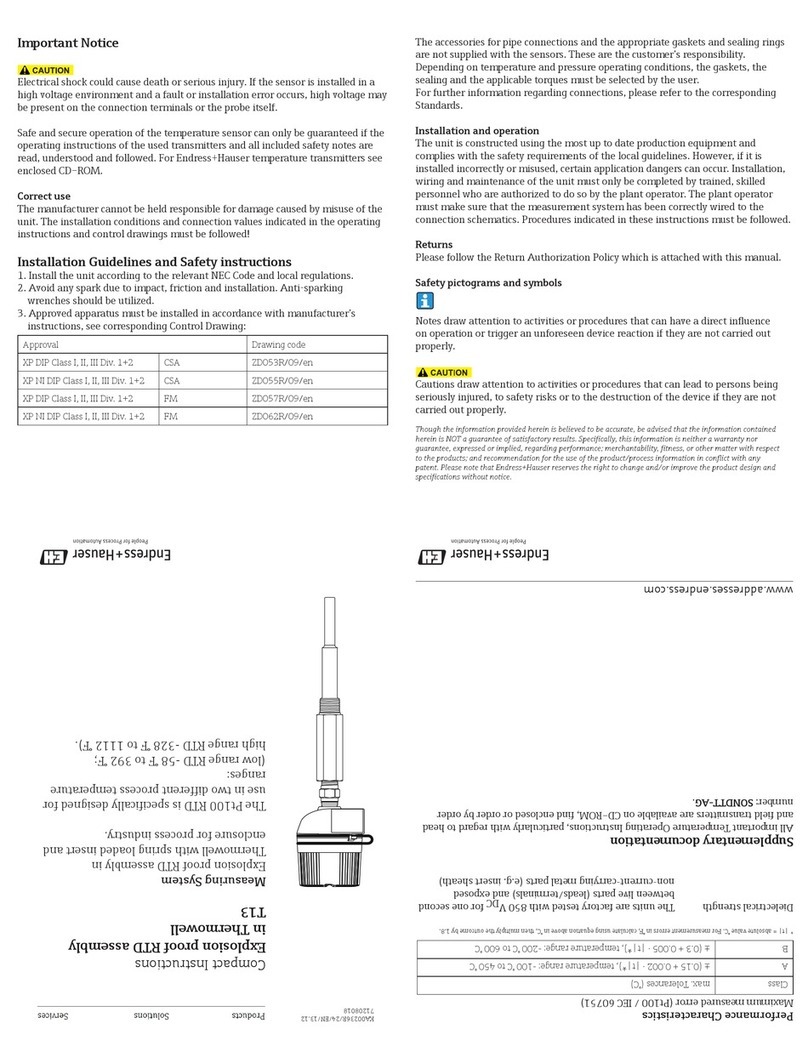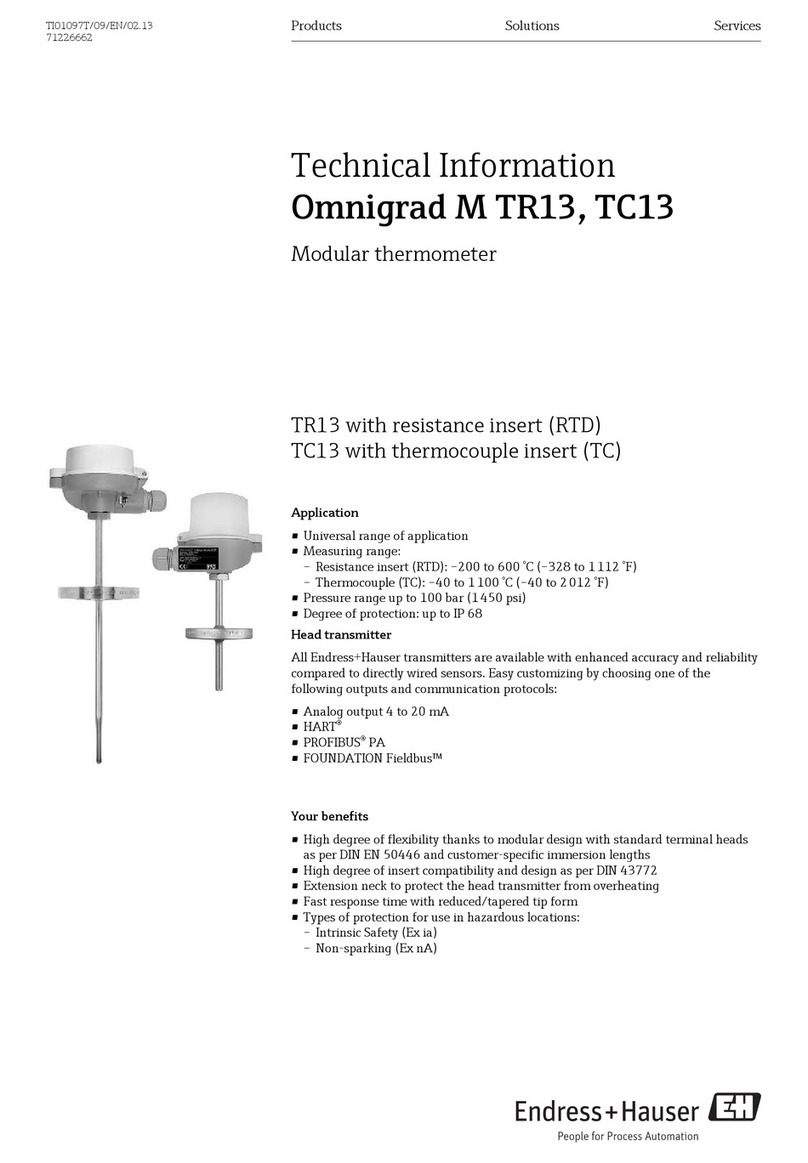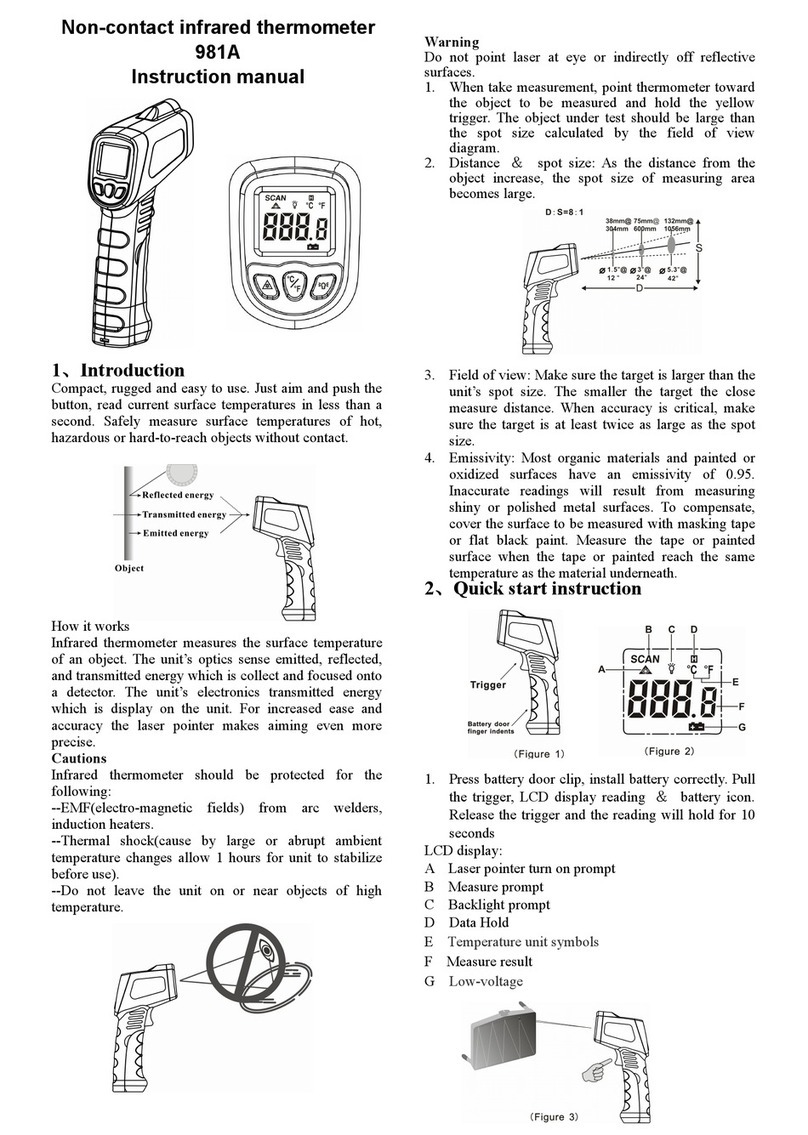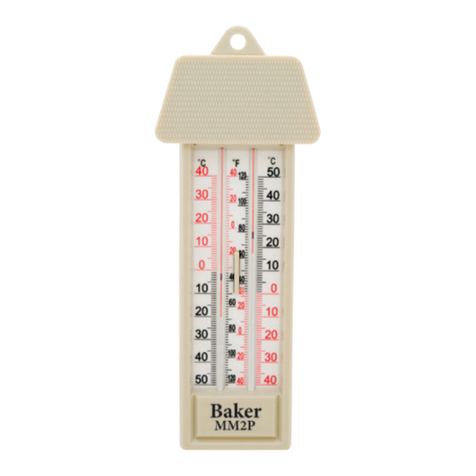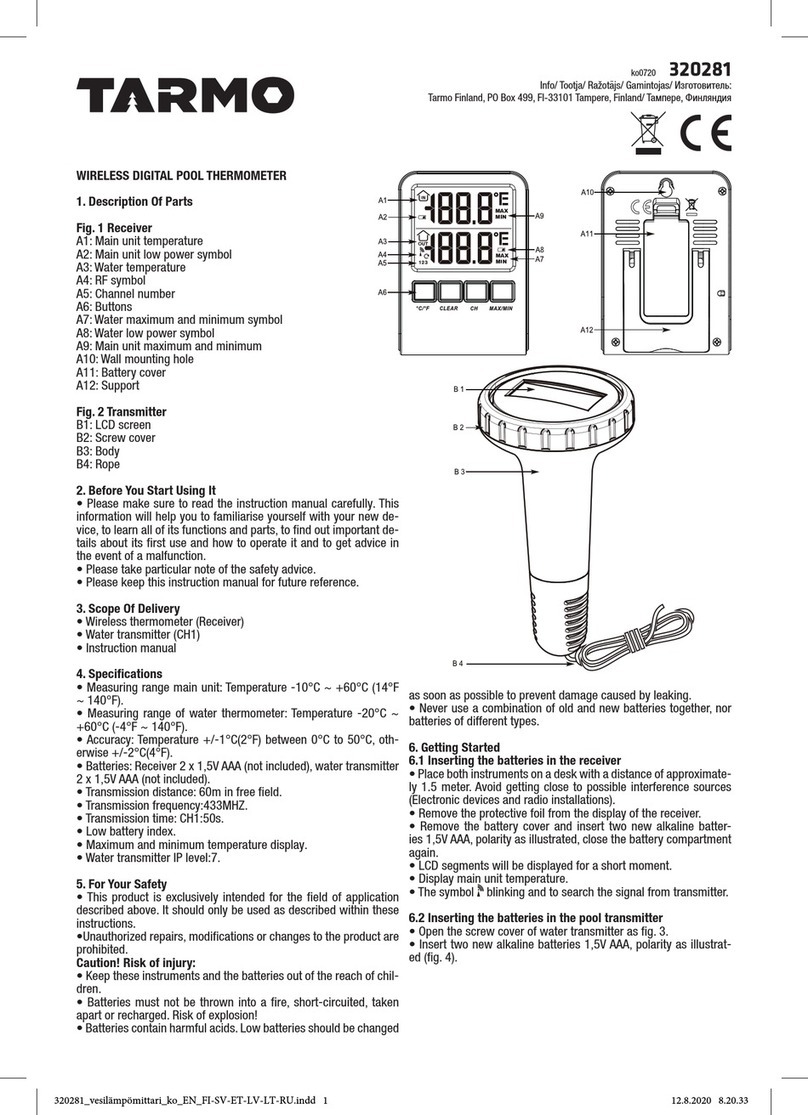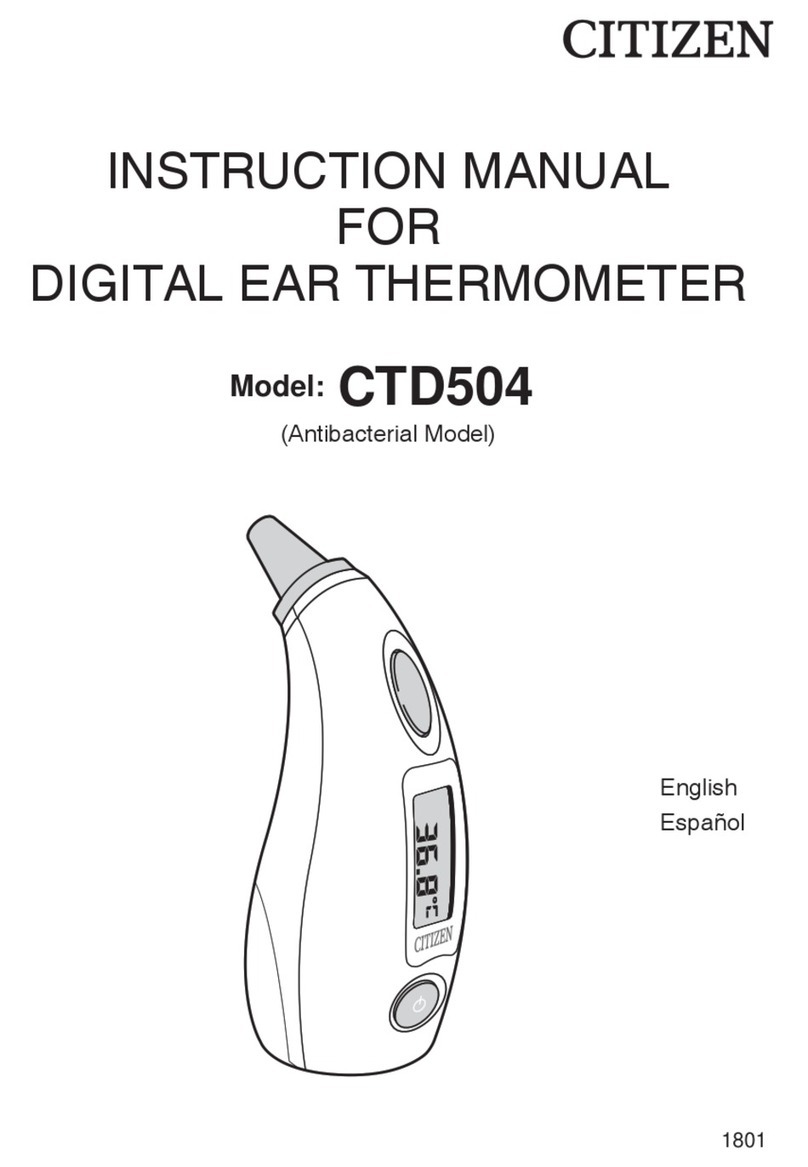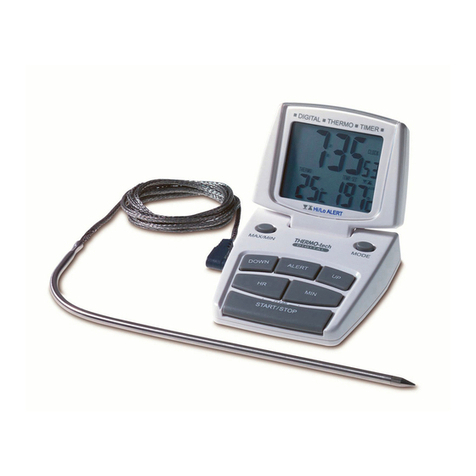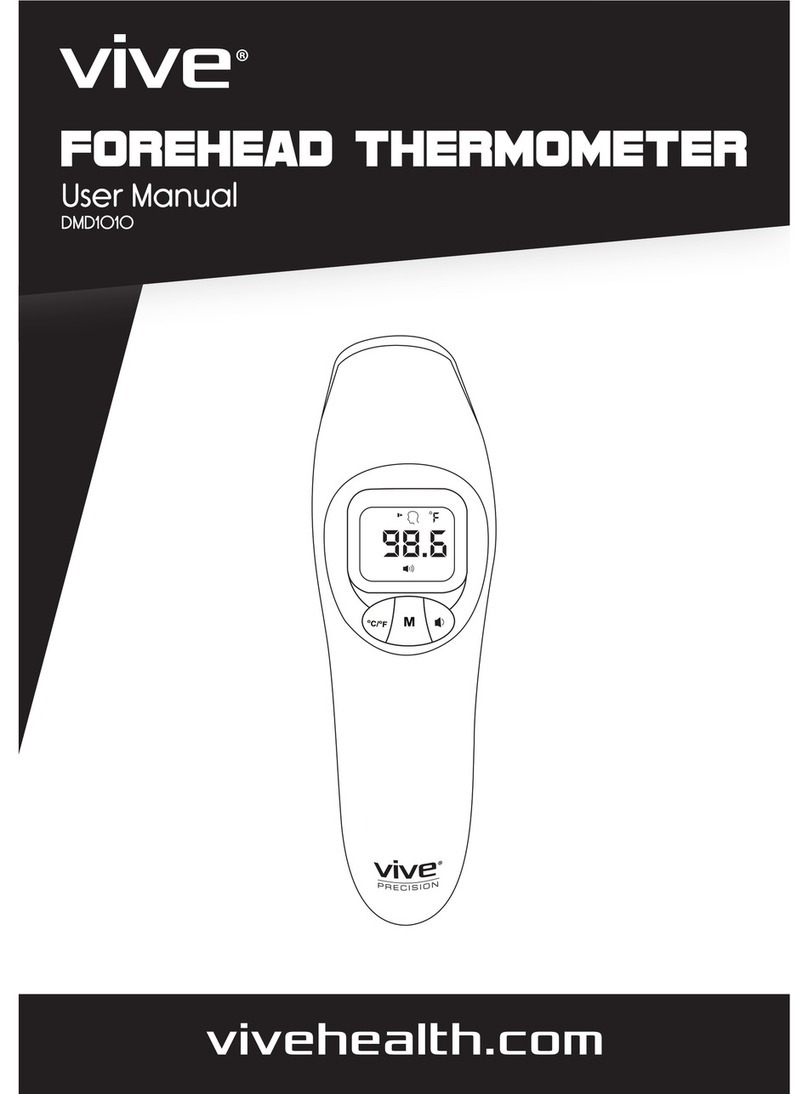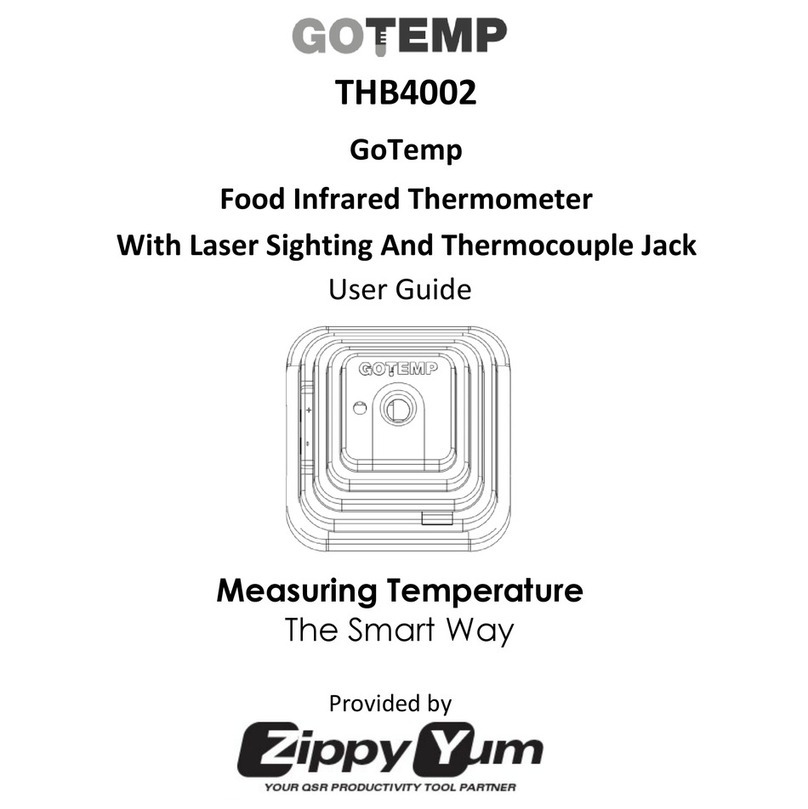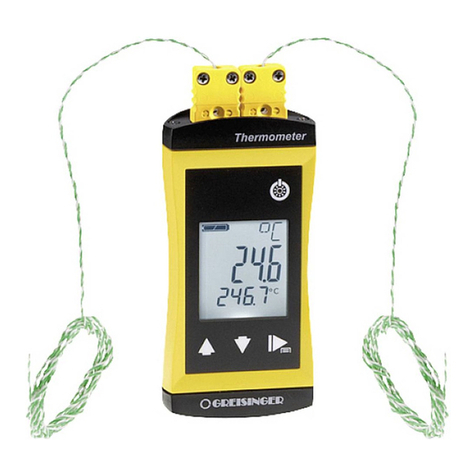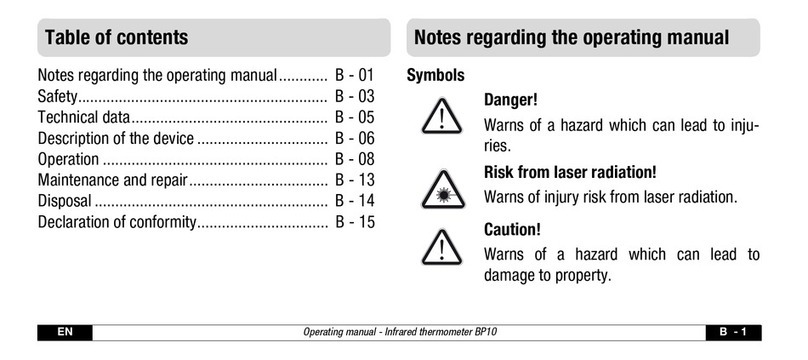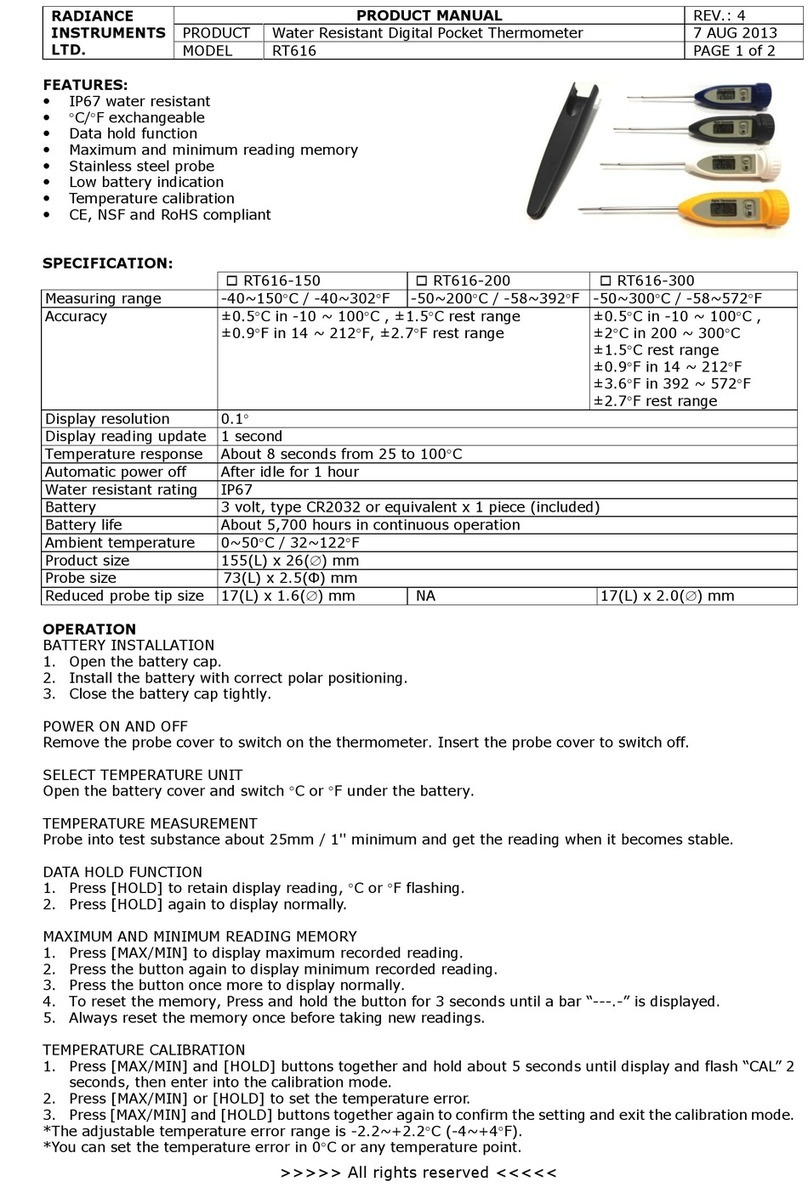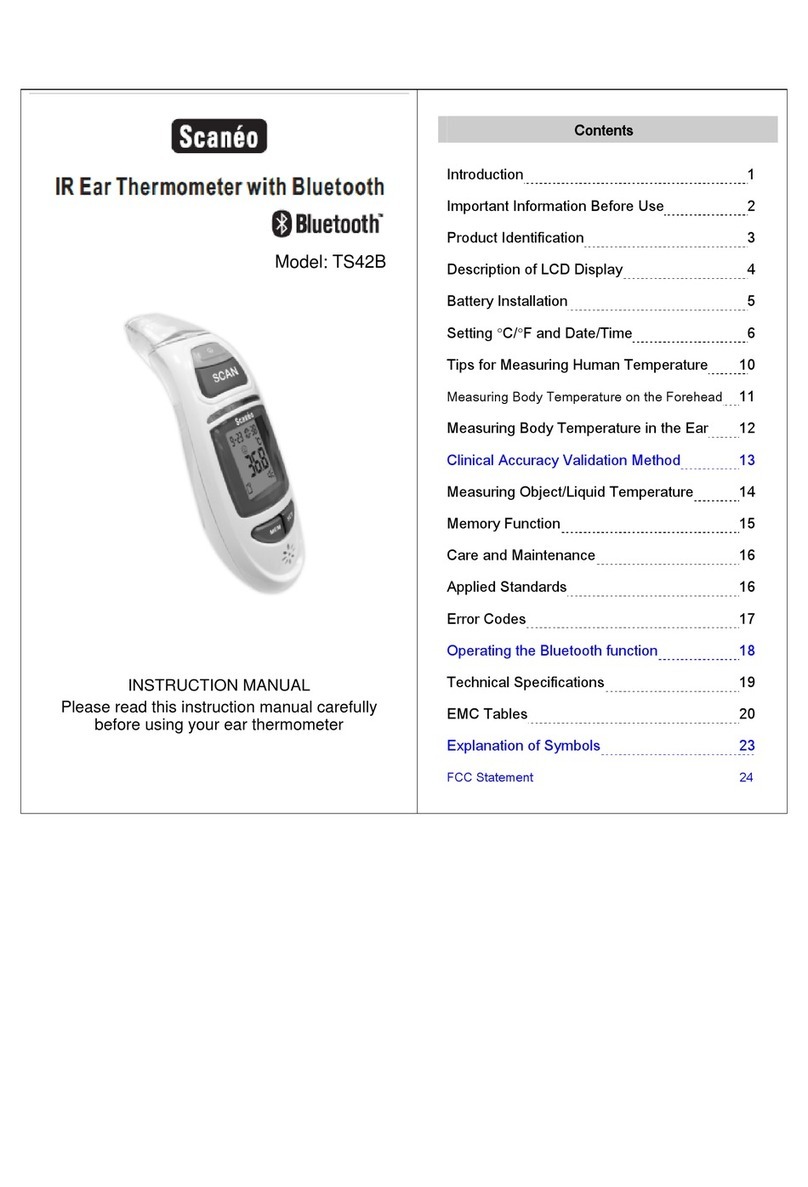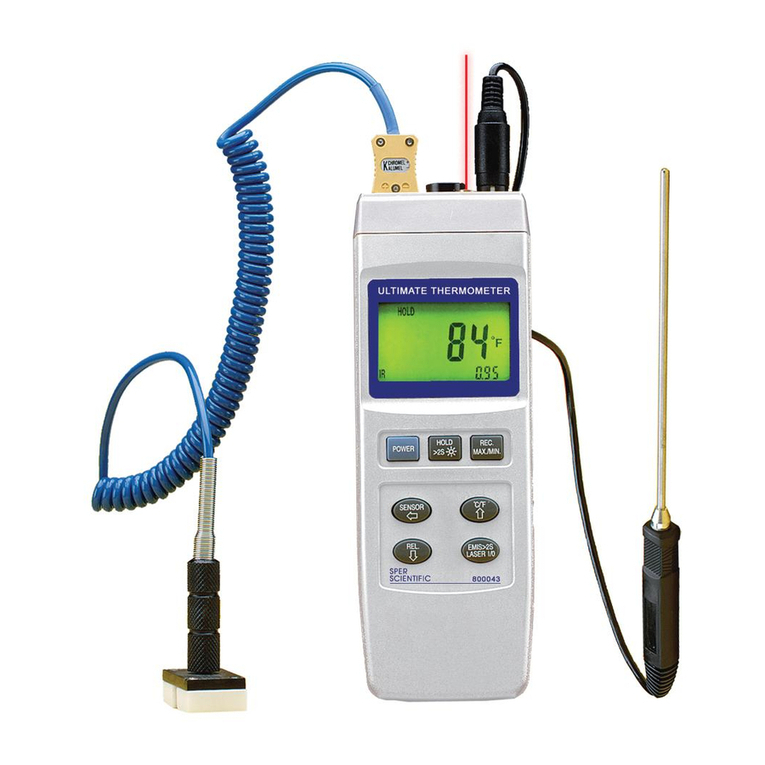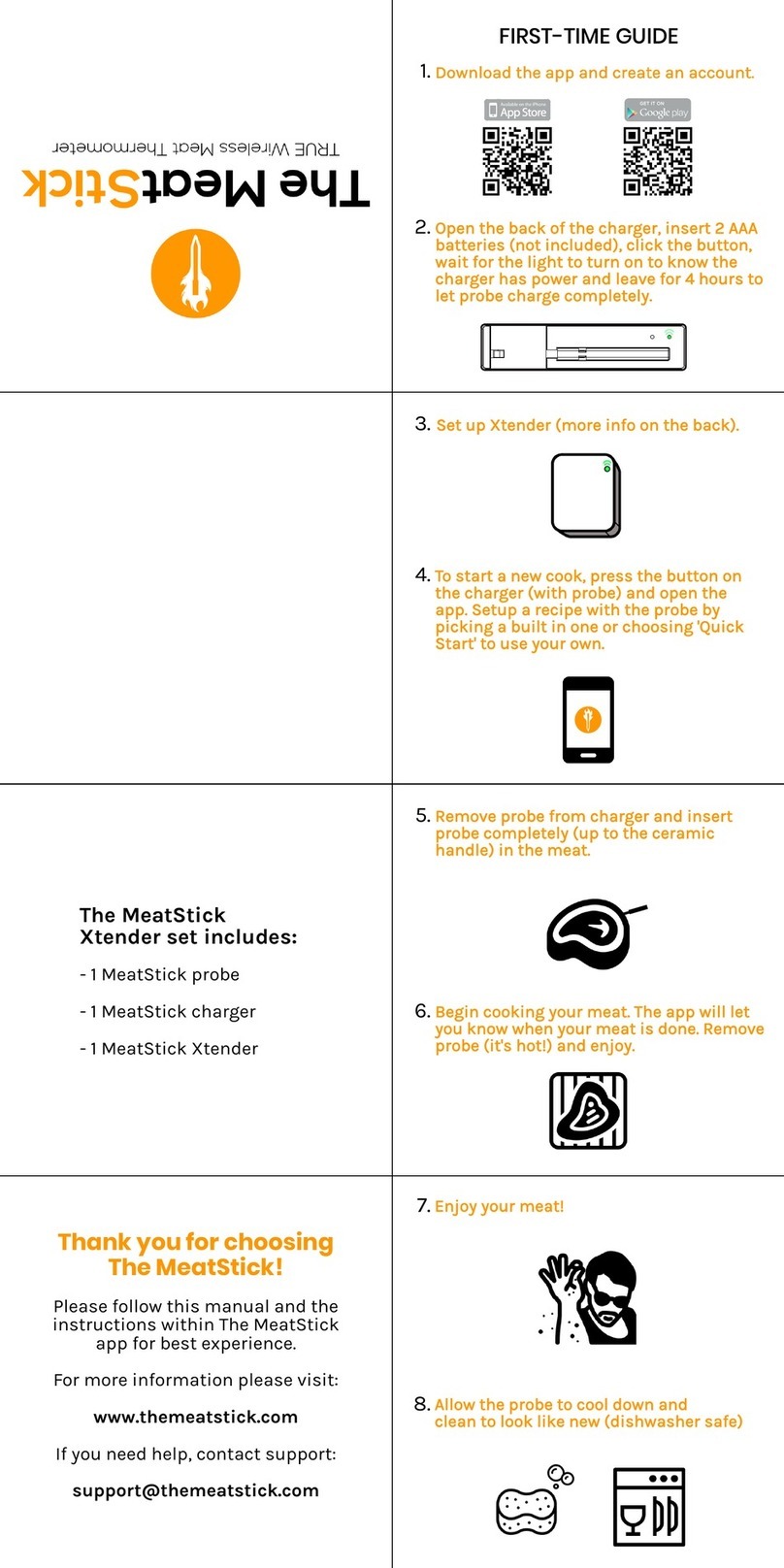iTHERM TM412
2 Endress+Hauser
Table of contents
Function and system design ................... 3
iTHERM Hygiene line ........................... 3
Measuring principle ............................ 3
Measuring system ............................. 4
Modular design ............................... 5
Input ..................................... 6
Measured variable ............................. 6
Measuring range .............................. 6
Output ................................... 6
Output signal ................................ 6
Family of temperature transmitters ................. 6
Wiring ................................... 7
Wiring diagrams for RTD ........................ 7
Cable entries ................................ 8
Connectors .................................. 9
Overvoltage protection ......................... 11
Performance characteristics .................. 11
Reference conditions .......................... 11
Maximum measured error ....................... 11
Influence of ambient temperature ................. 12
Self heating ................................ 12
Response time .............................. 12
Calibration ................................. 13
Insulation resistance .......................... 15
Installation ............................... 15
Orientation ................................ 15
Installation instructions ........................ 15
Environment .............................. 18
Ambient temperature range ..................... 18
Storage temperature .......................... 18
Humidity .................................. 18
Climate class ............................... 18
Degree of protection .......................... 18
Shock and vibration resistance .................... 18
Electromagnetic compatibility (EMC) ............... 18
Process .................................. 18
Process temperature range ...................... 18
Thermal shock .............................. 18
Process pressure range ......................... 18
Medium - state of aggregation .................... 19
Mechanical construction .................... 20
Design, dimensions ........................... 20
Weight ................................... 24
Material .................................. 24
Surface roughness ............................ 24
Terminal heads .............................. 24
Extension neck .............................. 28
Process connections ........................... 29
Tip shape ................................ 31
Certificates and approvals ................... 33
CE mark ................................... 33
Hygiene standard ............................ 33
Ex approval ................................ 33
Other standards and guidelines ................... 33
Parts in contact with the medium .................. 33
Surface purity ............................... 33
Material resistance ........................... 33
Material certification .......................... 33
Calibration ................................. 33
Protection tube testing and load capacity calculation ..... 34
Ordering information ....................... 34
Accessories ............................... 35
Device-specific accessories ...................... 35
Communication-specific accessories ................ 37
Service-specific accessories ...................... 38
System components ........................... 38
Documentation ............................ 39

